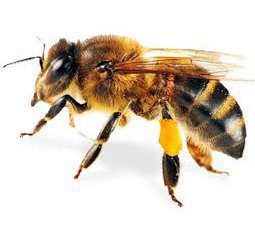
Australian operated

5.0
30 reviews

5.0
30 reviews

Australian operated
Free on-site visit & quote
Over 14,000+ homes protected
5/5 stars is most frequent rating
 Having a few bees visiting your garden can be a pleasant site, but what happens if they decide to make a nest somewhere on your property? Many people have tried to remove a bee or wasp nest, only to find that it can be dangerous and ineffective without the right tools or know how.
Having a few bees visiting your garden can be a pleasant site, but what happens if they decide to make a nest somewhere on your property? Many people have tried to remove a bee or wasp nest, only to find that it can be dangerous and ineffective without the right tools or know how.
Many species of bees and wasps – including native bees and honeybees – will inflict a powerful sting on contact. The sting itself can be painful and symptoms can range from mild localised swelling and itching to major allergic reactions and anaphylaxis.
Pest Ex provides effective and fast bee control services across Brisbane and Gold Coast. Our pest controllers are high trained and qualified, and use only the most environmentally friendly products to ensure your home or business will remain bee and wasp-free.
Contact us for a no obligation quote and see how we can help you.
The various species of bees that make their home in Queensland include the commercial Honeybee (Apis Mellifera), Carpenter Bees and Teddy Bear Bees. Each type has slightly different nesting habits, although all seek out crevices and cavities in buildings or among trees and shrubs.
Damage to property from bees can be caused when they locate their nests and wax combs in areas such as under roof eaves, in or around air-conditioning units or in mortar. Not only can it mean that the nests get in the way and can disrupt the normal operation of electrical appliances or form blockages in elements such as gutters, but the nests and bee activity can cause damage to the structures around them as well.
Having a bee or wasp nest removed by professionals as soon as it is discovered is important to ensure that you and your family remains safe and your property is protected from further damage.
Getting stung by a bee or a wasp can be a painful experience, however for some people it can be a lot more serious and even be life-threatening. The common Honeybee causes the most allergic reactions in Australia, but European and Paper Wasps are also becoming an issue. In particular, the European Wasp can be relatively aggressive, and has a sneaky habit of hiding inside drink cans when they are left outdoors.
Common symptoms of a bee or wasp sting can include local pain and swelling that lasts for a few hours. More dangerous allergic reactions and signs of anaphylaxis include itching, hives or welts forming, swelling of the face, tongue or throat, cramping and dizziness and nausea. In certain extreme cases, people can go into anaphylactic shock. Any of these reactions need to be monitored closely and you should seek medical treatment as quickly as possible.
There are ways to lower your risk of getting stung by a bee or a wasp. These include:
If you are concerned about bees and wasps in your local area you should also ensure that you have a professional pest inspection conducted on a regular basis.
Bees and wasps generally like to keep their nests out of plain sight, and prefer well hidden nooks and crevices in trees and building structures. A quick inspection of the inside and outside of your home or business can sometimes be enough to ensure there are no visible signs of bee activity. However more often than not they can be well hidden, for example, in roof spaces and air conditioning vents, verandahs and under decking.
Evidence that you may have bees and wasps in or around your property include:
Knowing that you may have a bee problem can also be as simple as hearing the familiar buzzing sound in the property. Getting a professional pest control company such as Pest Ex in to locate nests and to eradicate the pests is the most effective and safe way for ensuring the safety of your family and even your pets.
Bee removal has changed over the years. Previously it was common that pest control companies could use sprays or dusts to treat and kill bees in voids or homes.
As bees are important to the environment, Pest-Ex recommends safe removal by an experienced a bee expert. This way the bees will be safely removed and not exterminated. This is usually done by a beekeeper, who brings out a beehive with a queen in it. The bees will enter the beehive and then of course, they can be safely removed by the beekeeper. Usually if bees are in a wall or void, any honey or remains will also be removed so more bees don’t re-infest.
The risk of spraying or dusting bees to kill them can be dangerous, as it can turn thousands of bees aggressive and protective of their queen. This can often lead to disaster.
Contact Pest-Ex for a list of bee professionals in your area.







